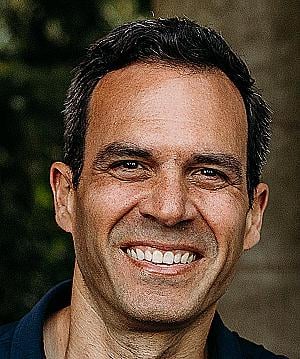Whiteboard Explainer - Friendly Informative Conversational Upbeat

Description
Read MoreVocal Characteristics
Language
EnglishVoice Age
Young Adult (18-35)Accents
North American (General) North American (US General American - GenAM) North American (US Mid-Atlantic) North American (US Midwest- Chicago, Great Lakes)Transcript
Note: Transcripts are generated using speech recognition software and may contain errors.
sport climbing is going to make its debut in the Tokyo olympics this summer after an 80 plus year history that began at smith Rock in central Oregon, rock climbing has always had some unofficial competitive elements as athletes pushed boundaries and climbed higher and harder routes with new techniques. But how did rock climbing turn into sport climbing and organized event with competitions and rankings and officials? And how did it all start at smith Rock? So the first recorded a sense at smith rock happened all the way back in the thirties and forties, but the now famous climbing spot didn't start to gain any recognition until the 19 fifties when Gil and Vivian stained er brothers Jim and jerry Ramsey and Jack Watts began to establish and name climbing lines. Then in 1960 Oregon created smith Rock State Park and together the strangers and jerry Ramsey published a 10 page guide to 30 different climbing routes in the area. Rock climbing continued to develop into the sport we know today, not just at smith rock or in the U. S, but all over the world. Then in 1982 Alan Watts, the son of Jack Watts and a mattress Local did something that changed the sport forever. He drilled a permanent bolts into the wall. How is this different? Well before permanent bolts climbers could only climb on walls that had natural cracks and holes were temporary safety gear could be placed and then removed after reaching the top of a route, the bolts opened up literally thousands of new walls for climbers because they didn't have to rely on these natural features and bolts, allowed Alan Watts and the climbers at smith Rock to establish permanent, easily accessible routes where they honed their techniques and practiced the gymnastic movements that became a hallmark of sport climbing smith rock became a climbing mecca and the community there sparked an entirely new discipline in the sport of rock climbing, one that emphasized short technical, high intensity routes. This new climbing style was exciting, but the bolts weren't a universally celebrated innovation, ethical questions about drilling permanent holes into natural landscapes immediately surfaced and are still around today. The competitive aspect of sport climbing also raised questions. Some climbers even boycotted the first sport climbing competitions and viewed climbers who did compete as sellouts. But ultimately sport climbing found its place in a major way. Competitions allowed climbers to make money and gain recognition in the sport bolts still raise ethical questions, but their use has been regulated and rules have been established to protect natural environments. And many climbers now climb indoors at sport climbing gyms which have become popular all over the world. But the very first us jim opened in Seattle in 1987 where to climbing pioneers literally glued rocks on the wooden walls and this summer entre preys a company who opened their U. S. Headquarters in bend Oregon in 1988 will design and supply the climbing walls for the first ever olympic climbing competition in Tokyo. And it all started at smith rock
Tags
Guy Next Door, IT Guy, Teacher, Presenter, Demonstrator, Authentic, Confident, Conversational, Educational, Friendly, Informative, Professional, Straightforward, Upbeat, Warm, North American (General), North American (US General American - GenAM), North American (US Mid-Atlantic), North American (US Midwest- Chicago, Great Lakes)
 Top Talent
Top Talent